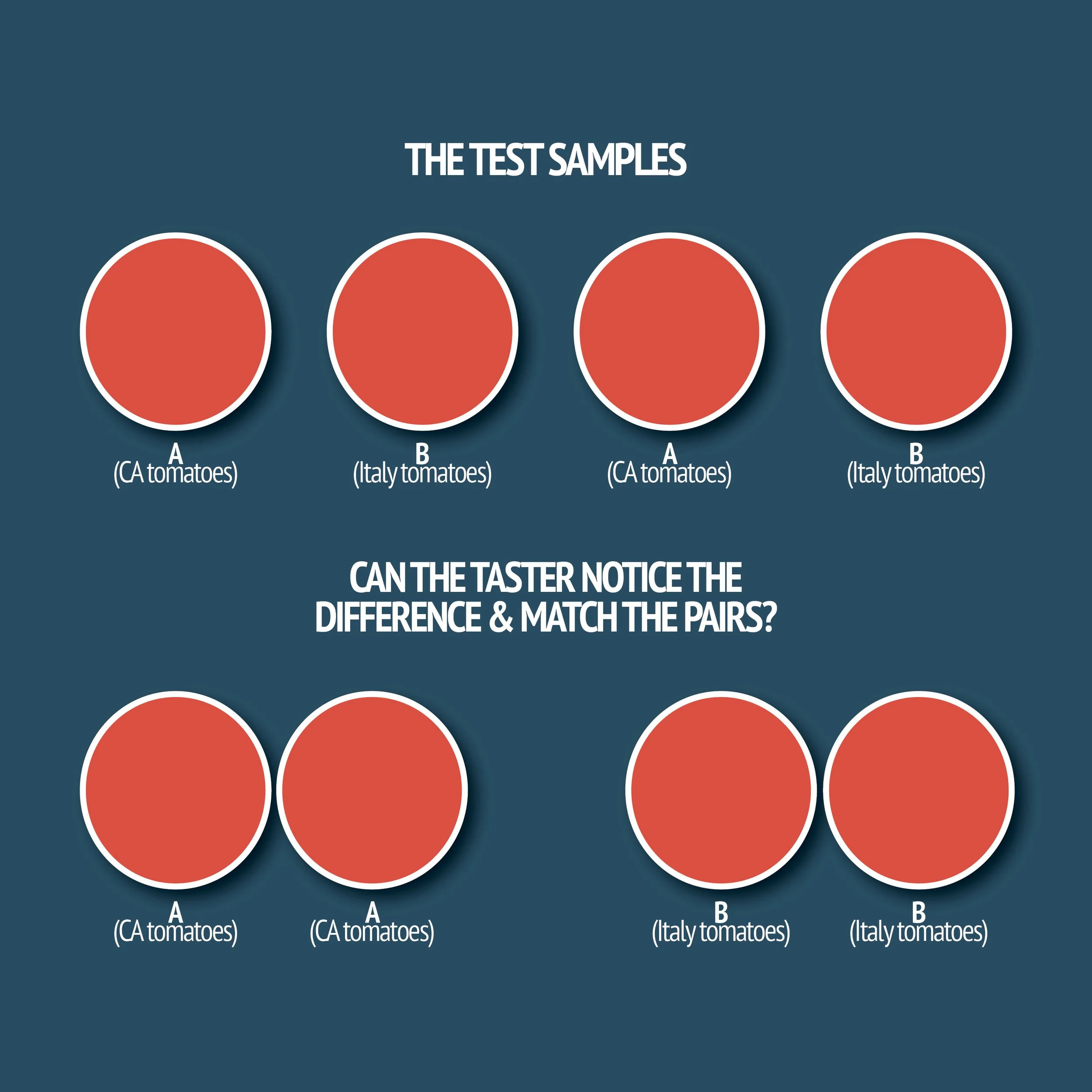How We Conduct Tetrad Testing at Ready Foods
Matching a recipe is a big part of our R&D team’s job. Tetrad testing is one of the tools we use to make sure a recipe is a match and it gives us data to show that a sample of tasters agreed. Plus, it’s fun!
What is a tetrad test?
A tetrad test is a taste test that highlights differences between two recipes by offering tastes of four samples. The participants are asked to taste the four samples and make two pairs of matching samples. The probability of guessing the correct answer in a tetrad scenario is ⅙.
EXAMPLE
Our R&D team has made two batches of our tomato soup recipe. One batch is made with canned tomatoes from California. The other batch is made with drummed tomatoes from Italy. R&D wants to know if consumers will be able to taste the difference in the tomatoes, so they conduct a tetrad test. Participants are given four cups of tomato soup all at once in a random order. Two cups are from the batch of soup made with California tomatoes, two cups from the Italian tomato batch. Tasters are asked to see if they can match up which two samples were made with the California tomatoes and which two with the Italian ones. If they cannot create the correct matches, we can statistically assume that they cannot tell a difference in taste or appearance between the two recipes and therefore between the two tomatoes.
Why do we use tetrad tests?
Tetrad tests are used when we are changing an ingredient in a recipe, changing the percentage of an ingredient in a recipe or changing the procedure in which a recipe is made. Conducting these tests let us know if the change is easily detectable. If the change is noticeable, we can also gather feedback from the tasters to understand what they noticed. This helps us adjust our next recipe version to be a closer match.
How does a tetrad test work?
We ask a variety of teammates from all departments to participate in each tetrad test. We randomly assign each individual to one of the six tasting orders for their cups of product. Example: AABB, ABAB, BBAA, BABA, ABBA, BAAB. This ensures that testers cannot assume the same pairs as the person next to them during the test. No cheating!
Testers are asked to drink water between bites to cleanse their palates as they taste. Once their pairs are submitted, we ask them if they are confident in their pairs or if they were guessing. This helps our R&D team as they are looking at the data. If a participant matched their pairs of samples correctly, but they were guessing, we might discount that piece of data.
Tetrad testing days are fun for our teammates, they get to taste delicious food! It’s also a great way for our R&D team to gather a small, but diverse sample of consumer feedback that helps our recipe process and our customers.
Delicious, not difficult.
Questions? Reach out!




